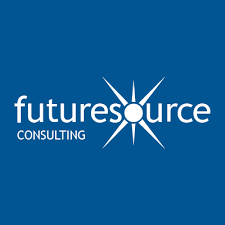Vendors Diversify Amid the Increasingly Competitive Video Conferencing Market — Futuresource Consulting Reports - March 8, 2024
By Staff Reports - March 8th, 2024
The Covid pandemic brought an explosive rise to video conferencing.
As many employees shifted to remote work, enterprises had little choice but to invest in video conferencing tools to enable remote communication and keep the wheels turning.
Despite many companies implementing return-to-office mandates, hybrid working models remain widespread, and hardware vendors are maneuvering to meet these challenges.
We saw the explosive rise of video conferencing (VC) during the pandemic. As many employees shifted to remote work, enterprises had little choice but to invest in video conferencing tools to enable remote communication and keep the wheels turning.
Despite many companies implementing return-to-office mandates, hybrid working models remain widespread. With the needs of offices diversifying and the video conferencing market becoming increasingly crowded, how are hardware vendors manoeuvring to meet these challenges?
Brands break new ground
It appears diversification is the current strategy. Brands are vying to strengthen their position by breaking into different product categories, with video bars taking the top spot as current favoured form factor. In June 2023, audio brand Sennheiser entered the video bar market, following Jabra’s entry in January 2023 and the launch of the Crestron Videobar 70 in May 2023. These launches blur the boundaries between product categories within the VC space, as vendors seek to cover all aspects of conferencing to meet enterprise needs.
Traditional wireless presentation vendors are following a similar strategy, with brands like Barco and WolfVision throwing their hats in the ring by launching video bars. Barco showcased their new offering, the ClickShare Bar, at ISE 2024. The ClickShare Bar is a particularly innovative example, incorporating wireless conferencing technology within the video bar itself to create an “all-in-one” solution.
Partnerships create new possibilities
Announced February 2024, the news of Microsoft’s partnership with Barco is hot off the press. The move involves a data-sharing relationship through which Microsoft can access data on Barco ClickShare devices. The aim is to provide more insights for IT managers on device usage, as well as help end-users easily create scalable, optimally equipped meeting rooms.
Barco’s partnership with Microsoft will be key to informing intelligent office design, enabling enterprises to access information on how devices and meeting rooms are used.
In our recent UC&C report, Futuresource estimated that Microsoft accounted for 36% of users in the Americas during 2023. Their partnership with Barco, then, holds significant implications for enterprises, particularly in the US and West Europe where both companies have a strong presence. The data collected from Barco devices can guide decision-makers in their AV purchasing decisions, empowering them to invest in equipment that meets actual business needs. This will help companies achieve a return on investment from their purchases, which is crucial in the current macroeconomic climate.
What does the future hold for the video conferencing market?
The lines between product categories in the video conferencing market are becoming increasingly blurred, as brands become more fluid and adaptable to changing consumer requirements. The future, then, offers some exciting possibilities.
In a bid to further diversify their product portfolio, some vendors are opting to expand into data management solutions. This will enable companies to monitor device usage more closely, with these insights providing a framework for enterprise AV decision-makers. Jabra, Kramer, Cisco, and EPOS are a few brands pursuing this route, with the launches of Jabra+, Panta Rhei, Webex Control Hub and EXPAND Control Unit respectively. While some device management platforms are currently limited to monitoring their own brand hardware, this could change in the future.
Application Programming Interface (API)-based platforms have the potential to expand into the management of third-party devices moving forward. This would allow for interoperability between hardware brands, making it easier for enterprises to equip and manage meeting room technology. Device-level insights allow IT departments to remotely monitor the status of hardware, minimising downtime and ensuring that devices operate as they should to maximise operational efficiency.
At a time when companies are forced to operate within restricted AV budgets, the insights gathered from device management platforms are imperative in making smart purchasing decisions. Without this data, optimally equipping meeting rooms becomes near impossible, risking wasted investments and defunct equipment.
For more information, please visit www.futuresource-consulting.com.



